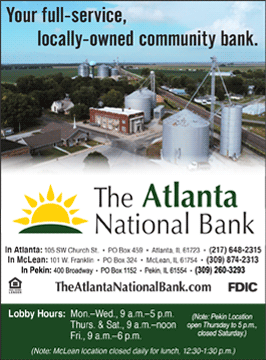State revenue projections improve as economic uncertainty grows
[May 06, 2025]
By Ben Szalinski
SPRINGFIELD — The General Assembly’s independent forecasting commission
has improved revenue projections for the upcoming fiscal year despite
growing economic volatility.
That’s good news for state lawmakers who are in the final weeks of
crafting the fiscal year 2026 budget set to take effect July 1. But the
Commission on Government Forecasting and Accountability’s upward
revision to its revenue forecast remains significantly more conservative
than what Gov. JB Pritzker’s office projected when he proposed a budget
in February.
COGFA’s latest update now projects $54.5 billion in revenue in FY26 –
$266 million more than the commission’s March projection, but still $471
million below the governor’s February projection for baseline revenues.
Pritzker has also proposed changes to raise an additional $492 million
in revenue in FY26, although that number is not factored into the
baseline revenue comparison.
COGFA is also projecting state revenue will increase by $317 million in
the current fiscal year 2025 compared to its March projection. That
means the state would finish the fiscal year at the end of June with
$53.9 billion of revenue – above the $53.3 billion lawmakers budgeted
for and $31 million more than the governor’s office’s February forecast.
The projected revenue growth was driven by strong April income tax
receipts. April revenue was up $593 million compared to April 2024 and
was driven by 20% growth in income tax receipts, thanks to higher
capital gains and interest earnings last year. Corporate income taxes
also grew by 6.6% for the month, even though the revenue source remains
down 8.2% for the fiscal year.

But there are warning signs in several areas, according to COGFA. The
commission lowered expectations for federal receipts for FY25 by 8.5%
and 6.3% in FY26 because the state has been using a fund outside the
typical General Revenue Fund for Medicaid-related expenses. That means
reimbursements from the federal government to the state are not
reflected in the state’s General Revenue Fund total.
The commission also warned that the federal government could, at any
time, decrease financial aid to states, creating more uncertainty.
“Those capital gains revenue increases are not sustainable so as we look
at fiscal year 26, we should not expect that as we go into fiscal year
27, I think it’s going to be an even worse look,” COGFA Co-Chair Rep.
C.D. Davidsmeyer, R-Murrayville, said at a news conference last week.
COGFA Revenue Manager Eric Noggle wrote broader economic uncertainty
necessitates a “more cautious approach” projecting next year’s revenue
numbers.
[to top of second column]
|

The Illinois State Capitol is pictured from downtown Springfield in
May 2024. (Capitol News Illinois photo by Andrew Adams)

“The unknown implications of tariffs create many questions related to
the duration of the tariffs, their impact on prices, and if these
changes could lead to a recession,” Noggle wrote. “These complicating
factors and their potential impact on tax revenues make the revenue
estimate for FY 2026 very challenging.”
Recent national economic reports have indicated the U.S. added more jobs
than expected in April, but the nation’s gross domestic product declined
by 0.3% in the first quarter of 2025, marking the first quarter of
economic regression since 2022. Personal consumption grew by 1.8%,
showing consumers overall aren’t yet cutting back, but it was the
slowest growth since spring 2022.
“It’s very concerning because Illinois tends to lag the nation in
economic growth and economic stability,” Davidsmeyer said.
The decline in GDP was driven by an increase in imports, COGFA Chief
Economist Ben Varner wrote, because businesses are likely
“front-loading” foreign purchases before tariffs imposed by the Trump
administration kick in and make overseas goods more expensive. Imports
are subtracted from domestic growth to calculate GDP.
National projections are also blaring more warnings. Wells Fargo
modeling projects stagflation from tariffs and an increase in inflation
will cause an economic downturn, while Goldman Sachs’ early April
projection pegs the likelihood of a recession at 45%.
“The U.S. economy has entered a precarious phase, with early signs of
contraction and rising inflation signaling the potential onset of
stagflation,” Varner wrote. “While domestic demand and business
investment remain relatively strong, they are being overshadowed by
external shocks — particularly the surge in imports ahead of tariff
implementation. The policy-driven volatility is already weighing on
forecasts and investor confidence.”
The governor’s proposed $55.2 billion FY26 budget is based on a December
S&P Global forecast that projected stable economic growth and considered
some of Trump’s proposed economic policies, including tariffs and tax
cut extensions, Pritzker budget office director Alexis Sturm said told a
legislative committee in February.
Capitol News Illinois is
a nonprofit, nonpartisan news service that distributes state government
coverage to hundreds of news outlets statewide. It is funded primarily
by the Illinois Press Foundation and the Robert R. McCormick Foundation. |